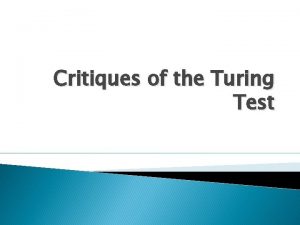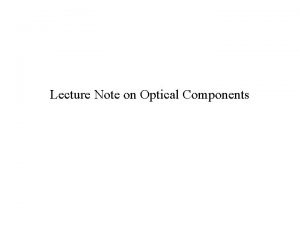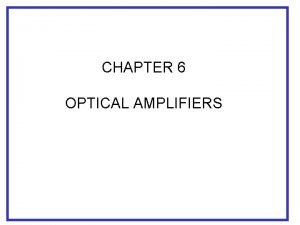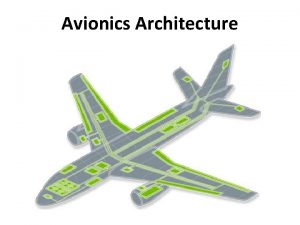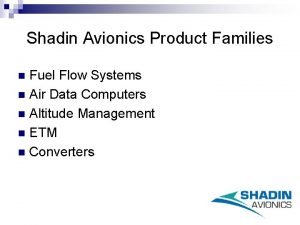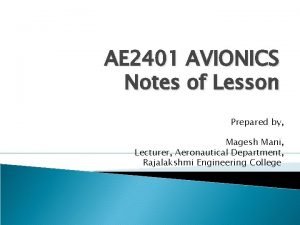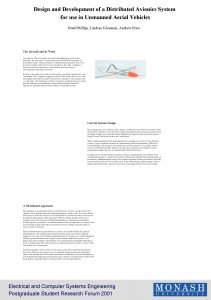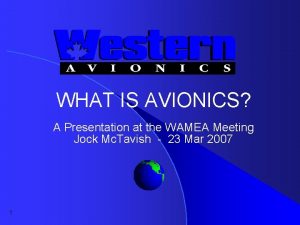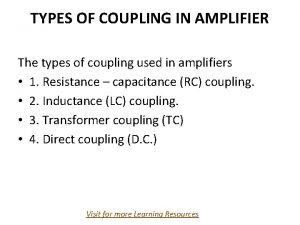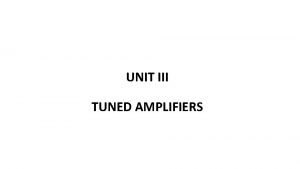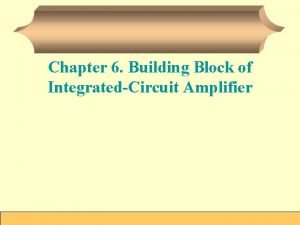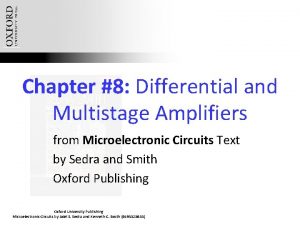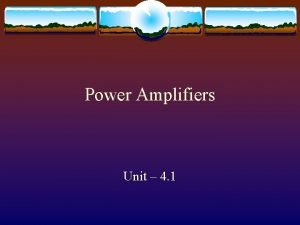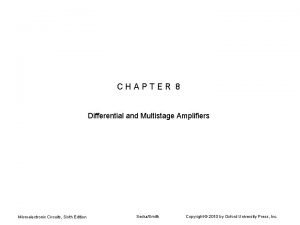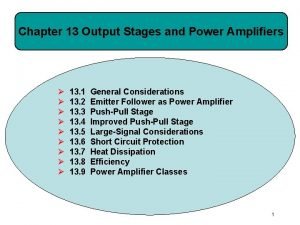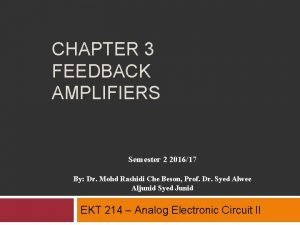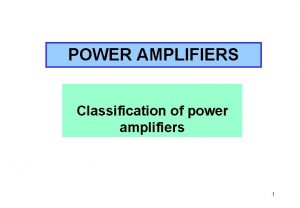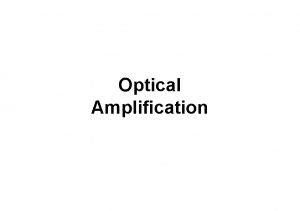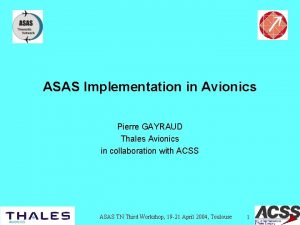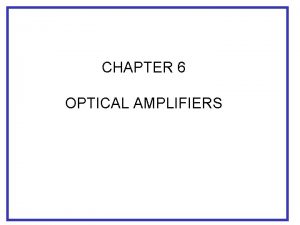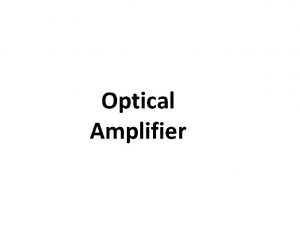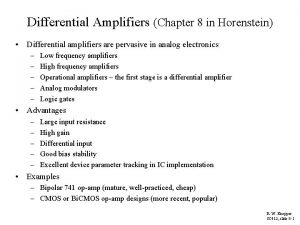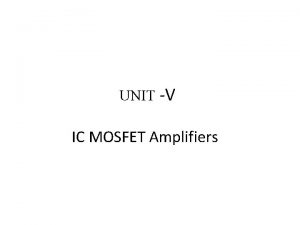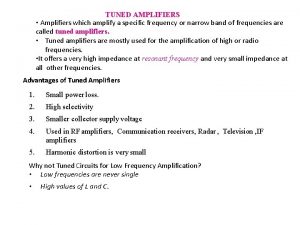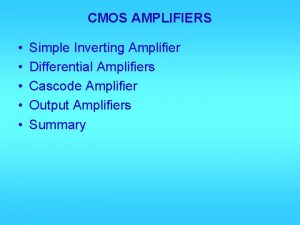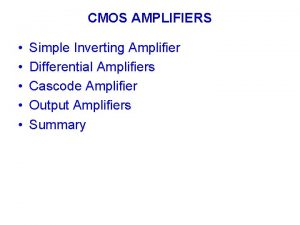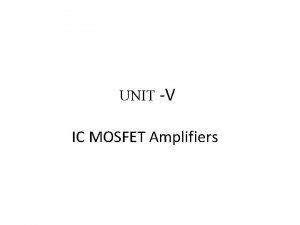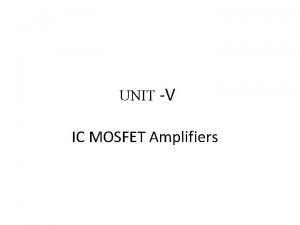Semiconductor Optical Amplifiers in Avionics C Michie W

























- Slides: 25

Semiconductor Optical Amplifiers in Avionics C Michie, W Johnstone , I Andonovic , E Murphy , H White, A Kelly

Semiconductor Optical Amplifiers in Avionics • Significant advantages within Avionics context from use of optical communications networks • bandwidth, EMI, significant weight savings • Current systems limited to point, multimode • This work • Learn from terrestrial communications using COTS • Focus on PONs – cost is critical • Strategies towards WDM – minimal component inventory • Key operational consideration • Extended temperature range

Long Haul; DWDM systems maximise fibre bandwidth usage TXλ 1 TXλ 2 TXλX TXλN 40 wavelengths, 200 GHz spacing 10, 40, 100+ Gbit/channel

Long Haul; DWDM systems maximise fibre bandwidth usage • Wavelength specific transmitters – single wavelength, DFB – Temperature regulated • Many wavelengths – inventory issues for Avionic system • Temperature Control – increased power consumption • Expensive for Avionics – not a flier!

Passive Optical Networks • • High bandwidth Access solutions Cost is critical – minimise number of components Minimise manufacturing specification Operate without cooling if possible • Reflective Semiconductor Based Optical Amplifiers – RSOA – transmitter and amplifier using same component

RSOAs as transmitters P λ BLS User end CS- RSOA

RSOAs as transmitters P λ CS-RSOA P CS-RSOA Broad Band BLS Source CS-RSOA User

Avionics Link • Simple link – 500 m, 1 Gbit/s • Single Broad band seed source – might need two ? • Multiplexer, de-multiplexer • Minimal cooling/heating

BLS 0. 6 d. B 0. 8 d. B 3. 5 d. B 0. 6 d. B Rx Rx Rx Tx RSOA Fibre Link Tx RSOA Rx Tx RSOA Rx Rx Rx Fibre Link

RSOA Design In. P: In. Ga. As. P Buried Heterostructure Lateral Waveguide Tapers Tensile Bulk High back refectivity 0. 88 Front facet AR coated RSOA in TO

TO-packaged S-band RSOA parametric tests Standard tests at 25ºC and 80 m. A

Dynamic Range • Psat ~ 5 d. Bm, Gain > 20 d. B • so we need -15 d. Bm input to saturate • Can get 0 d. Bm/nm from COTS sources • -5 d. Bm/nm is obtainable with lower power module – NB the above module needs to be cooled but it should be the only component within the system • To get 12 d. B dynamic range (allows 3 d. B plus of margin) we can allow gain/Psat drop with temperature

RSOA modulation experiments TO packaged devices on ETS evaluation board 50 m. A DC bias, 60 m. A modulation S band RSOA, CW injection at 1465 – 1530 nm Stage temperature 25°C Modulation at 1. 25 Gbps data rate with 211 -1 PRBS bit pattern The Rx - APD photoreceiver with limiting amplifier

Sensitivity, Output Power, Gain and Path Loss Capability at 1490 nm and 25ºC ~30 d. B return path loss capability at -20 d. Bm input

Sensitivity, Output Power, Gain and Path Loss Capability at 1580 nm and 25ºC

Sensitivity, Output Power, Gain and PLC versus Wavelength at 25ºC -20 d. Bm CW input power and 25ºC stage temperature Eye diagram at 1490 nm

S, C and L band performance S-band device C-band device

RSOA with Broadband light source

Path Loss Capability TLS, Bl. S

High Temperature RSOA Design Al. In. Ga. As Ridge Waveguide Single Polarisation High back refectivity 0. 88 Front facet AR coated 0. 01% RSOA in TO

Temperature Performance of RSOA Tuneable Laser Variable Attenuator RSOA Temperature Controlled Mount Optical Spectrum Analyser Evaluate Gain, NF, Psat as a function of temperature. Enables prediction of performance (Power budget for BER 10 -9)

Packaged BH Temperature Characterisation

Chip on Carrier Ridge Temperature Characterisation

Temperature Characterisation

Conclusions • WDM PONs enabled by RSOAs – TO packaged polarisation insensitive S band RSOA – ~1 d. B penalty at 1. 25 Gbit/s compared to commercial M-Z modulator • High Temperature Operation Al. In. Ga. As active region – – Ridge waveguide design due to oxidation Single polarisation Potential to increase operating temperature to > 70 C Much reduced cooling requirement
 Donald michie
Donald michie Optical amplifiers lecture notes
Optical amplifiers lecture notes In-line optical dwdm amplifiers
In-line optical dwdm amplifiers Rad hard avionics
Rad hard avionics Pave pillar architecture
Pave pillar architecture Shadin avionics
Shadin avionics Bits 1-3 in arinc 629 used for
Bits 1-3 in arinc 629 used for Avionics systems design
Avionics systems design What is avionics
What is avionics Cdti avionics
Cdti avionics Technisonic avionics installation
Technisonic avionics installation Special-purpose op-amp circuits
Special-purpose op-amp circuits Types of coupling in multistage amplifier
Types of coupling in multistage amplifier Double tuned amplifier
Double tuned amplifier Building blocks of integrated-circuit amplifiers
Building blocks of integrated-circuit amplifiers Differential and multistage amplifiers
Differential and multistage amplifiers Power amplifiers classification
Power amplifiers classification Operational amplifier is also called as
Operational amplifier is also called as Microelectronic
Microelectronic Angels in amplifiers
Angels in amplifiers Rippling rpass
Rippling rpass Classify feedback amplifiers
Classify feedback amplifiers Classification of power amplifiers
Classification of power amplifiers What is output stage
What is output stage Jfet disadvantages
Jfet disadvantages Classification of output stages
Classification of output stages
